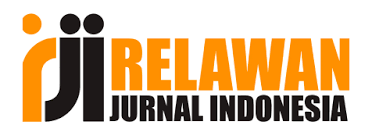Enhancing Distance Education through Artificial Intelligence in Teaching English
Abstract
This article is intended to present essential facts and one of the most modern ways to improve the efficiency of education among youth. Today the productive use of innovative technologies is important in the educational process. Therefore, nowadays research papers are being conducted to develop different projects to create a system of distance education for students using innovative technologies by scientists. In the 21st century, the development of science and information and communication technologies has led to a significant acceleration of the education system. Also, this paper provides basic information about usage and development of distance education with the help of artificial intelligence that is crucial for learning new educational technologies
References
A. A Abdukodirov, A. H Pardaev "Theory and practice of distance learning" Tashkent 2009. P 72.
A. A Abdukodirov Technology of distance learning in higher education // "Scientific and pedagogical bases of the introduction of modern technologies and best practices in the educational process of higher education" res. scientific-practical conference (November 28-29, 2008), T., 2008 pages 11-14.
A. A Abdukodirov One of the main forms of education of the XXI century // Education Management, 2006. 64-p.
Andersen, J. C. (2013). Learner satisfaction in online learning: An analysis of the perceived impact of learner-social media and learner–instructor interaction. Doctoral dissertation. East Tennessee State University, Tennessee.
Anderson, J. R., Boyle, C. F., & Reiser, B. J. (1985). Intelligent tutoring systems. Science, 228(4698), 456–462.
Baker, R. S. (2016). Stupid tutoring systems, intelligent humans. International Journal of Artificial Intelligence in Education, 26(2), p 600–614.
Braun, V., & Clarke, V. (2006). Using thematic analysis in psychology. Qualitative Research in Psychology, 3(2), p 77–101.
Boden, M. A. (1998). Creativity and artificial intelligence. Artificial intelligence, 103(1-2), 347-356.
Du Boulay, B. (2016). Artificial intelligence as an effective classroom assistant. IEEE Intelligent Systems, 31(6), p 76-81.
Narimanova J.Y The Role of Teachers’ Cultural Awareness in Preparing to Work with Multicultural Students. The American Journal of Social Science and Education Innovations (ISSN – 2689-100x) Published: September 18, 2020. P: 172-181.
Narimanova J.Y. The Significance of Comprehending Cultural Diversity through Movies in English Lessons. International Journal of Engineering and Information Systems (IJEAIS) ISSN: 2643-640X Vol. 4, Issue 7, July – 2020, Pages: 53-58.
Narimanova J.Y. The Role of Culture in the Development of Students’ Intercultural Communication Competence in English Language Teaching. International Journal of Engineering and Information Systems (IJEAIS) ISSN: 2643-640X. Vol. 4, Issue 7, July – 2020, Pages: 46-52.

















